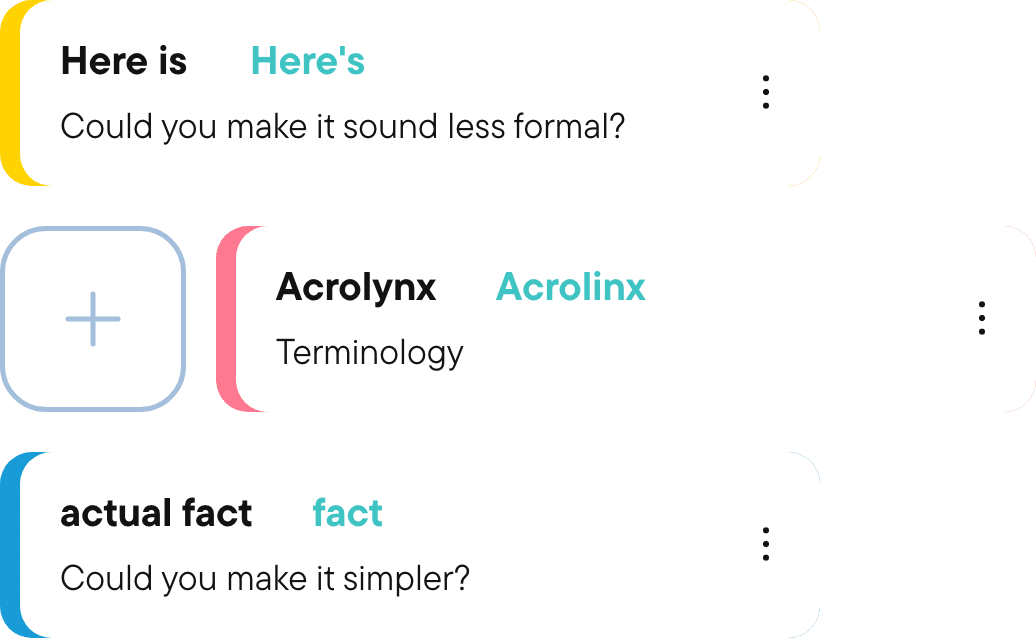
Explore the hub
Let’s define inclusive language
When we talk about inclusive language, it’s usually in the broader context of diversity and inclusion. Inclusive language is about deliberate, respectful word choice. It’s just one part of inclusive communication, which also factors in verbal communication, tone of voice, listening skills, and contextual understanding.
A recent Acrolinx poll on LinkedIn revealed that:
79% of people think it’s important for companies to use inclusive language
But, only 55% of companies have inclusive language guidelines for their content.
At Acrolinx, we define inclusive language like this:
“Inclusive language aims to treat people with respect and avoid offense. It does that by avoiding words and certain expressions that exclude, stereotype, discriminate, or assign negative connotations to personal characteristics of certain people and communities.”
Personal characteristics may refer to someone’s gender, pronouns, nationality, religion, marital status, disability, skin tone, migration status, age, political beliefs, family structures, sexual orientation, socioeconomic background, ethnicity, geography, interests, and more. Different combinations of personal characteristics both as individuals, and communities, are what we know as “diversity.”
You can view inclusive language from:
- An inward perspective — which describes how a company talks to and about its employees or candidates.
- An outward perspective — which describes how a company brands itself and addresses customers and the wider public.
We have an in-depth blog that elaborates on the definition of inclusive language. Because inclusive language isn’t just about avoiding offense. Just as inclusion aims to foster belonging (more than non-discrimination), inclusive language aims to challenge our biases, sensitize our empathy toward others, and raise awareness of words with painful historical origins.
Principles to remember: A quick guide
The first important principle to communicating inclusively is that inclusive language starts with inclusive listening. That may mean swapping our spot on the main stage to let someone who’s been historically excluded share their experiences and stories, or helping them be heard by using our privilege to amplify their voices.
Other principles to remember include:
- Start by listening to how people talk about themselves.
- Let the people affected most by non-inclusive language lead the dialogue about what’s inclusive or not. We can never know the nuances of another person’s identity better than they do, so let them decide what works for them.
- Avoid stereotyping people, even if the association is positive.
- Place the person before their condition (there are exceptions, but if you’re not sure, opt for person-first language or ask).
- Be intentional about choosing the level of specificity to describe people.
- Don’t use general or vague terms when a specific term is more appropriate.
- Be attentive to changes in language used among identity communities.
Finally, inclusive words alone can’t foster belonging — although they certainly help! Often, learning to speak and write inclusively brings up conversations about gender, cognitive bias, and how to create more equitable workplaces. Ideally, we’re pairing inclusive words with inclusive actions! This diagram below shows how inclusion, diversity, and equity all contribute to belonging.
Ready for content success?
See how our AI capabilities help you create and maintain high-quality content in our demo.

